Have Questions or Comments? Please ask your questions in the comments section below. We attempt to respond to ALL questions or comments.
Geographic Farming – How to Make Real Money – Part 2 – Selecting a Farm
GeoFarming
Caroline: Hi, I’m Caroline Springer. Welcome. This is the next session of Get Sellers Calling You with Beatty Carmichael. Beatty is the CEO of Master Grabber and the creator of Agent Dominator. He is also one of the top marketing experts in the real estate field. Today we are continuing on in our discussion of geographic farming and how to make real money with it. Last week we had a little bit of a synopsis and overview. Today we are going to be digging in a little bit deeper. Just a reminder for those of you on our live call, we do have the lines muted. Today we are actually going to hold off on questions and answers at the end of the call. We may have some time. We’ll see how it goes. Let’s get started. Welcome, Beatty. I’m excited to continue on in our conversation.
Beatty: I am too. This is a real passion of mine. It’s actually what I cut my teeth on years back in working with agents. It’s like going back home sometimes.
Caroline: I love it. Do you want to walk us through just a little bit of an overview from last time? I know last time we did a pretty big synopsis of a list of everything that makes geographic farming profitable. I know today we are going to kind of dig in a little bit more, but if you would like to do an overview.
Beatty: Yes, I think that’s a great idea. I would love to do that. So we are talking about generating cash through geographic farming. I can say that a little bit humorously because most people who do geographic farming spend cash but they never really generate it. There is a difference between “pursuing” geographic farming and doing it in a way that you actually make money. Doing it in the way that you make money is, more than anything else, knowing what it is that you are doing so that you can do it right.
So last week we were talking about the overall steps, the process in what you do. The first step is that you have to pick the right location. That’s what we are going to talk about today. The right location is everything, because if you pick the wrong location, then there is no chance in making any money at all. So picking the right location is very first and the most important part of what you do in geographic farming.
After that, you have to have good expectations. What is it that you are supposed to doing? And what are the results that you should be getting over what timeframe? That is important. So you do the right things and do them long enough so that they have a chance to actually work for you.
Then, once you start farming, the question is how do you touch it? There are a number of things you can do. There are at least 10 that I know of that are low cost ways to successfully and continuously touch a farm. So we will be laying that out on one of those calls and talking about that.
Then, the last thing will be kind of everything you want to know about postcard marketing to a geographic farm. Because typically, most agents, when they do a geographic farm, its focus is in some capacity around postcards, but the question is, what type of postcards? How frequently? How do you set them up? What works best? Jumbo or regular sized? All kinds of questions. That’s kind of the layout that we talked about last week and that we’ll be going through as we cover all of these topics in the series.
Caroline: That sounds great. I know there is a lot of content in there for us to go over. And like you said earlier, I know this is something you have a lot of expertise in from a lot of years of seeing successes. I’m excited for our listeners to receive that wisdom from you. Today, I know you said we are going to dig into how to select a farm. Is there place that you recommend that everyone start, maybe a bird’s eye view or a process they should think through as they are selecting? I’d love to hear how you recommend for people to start.
Beatty: So you know the most important part is everything that you do in geographic farming is process driven. Geographic farming is nothing more than a proven method of marketing that, if you follow the processes that others have already gone before and developed to be successful, then you will be successful. It is 1 + 1 always equals 2. It’s not something that is subjective. You don’t just kind of eeny, meeny, miny, moe and just pick a farm by its toe or whatever you want to call it. So let’s talk about the steps in actually picking the right spot.
I mentioned this as being the most important part. I want to bring you back into how all of this all fits into best practices in marketing. Many years back, when I was cutting my teeth in marketing, the big thing at that time was called Direct Mail Marketing. This is when people would send out what’s called Sales Letters in the mailbox. Now we have the same concept, but it’s done on the internet. The delivery method is different, but the concepts are still identical.
When you do marketing, there are three things that drive all of your results. This first, which is about 40% of your results, is the list that you target. The second, which is also about 40% of your results, is the offer that you are making to that list. The third, which is the remaining 20% of results, is the way in which you communicate or write that offer. In marketing, we call it the copy that you actually write. If we take that and try to understand it a little bit here, and especially how it applies to geographic farming, the list that you target is most important. Let me see if this makes sense. I’m just going to make a corollary right now. Let’s say that I have a product. Let’s say it is a joint pain relief product and my ideal market, out of all of my studies, I find is the people between 45 and 65 who have joint pain who are most likely to purchase my product. So if I go out and I get a list of high school athletes who play football and I start to mail that list, am I likely to sell any of my product to that list? What do you think, Caroline?
Caroline: I would think not.
Beatty: The reason is, it is a completely different list than the ideal customer. High school athletes are still young and their joints don’t hurt. So if I go after the wrong list right off the bat, I’m going to have no sales. Do you see that correlation?
Caroline: Absolutely. I think the list is the key. The location and who you are marketing to are the key. If you don’t have that then you are not starting out on the right foot.
Beatty: That’s right. So that’s why selecting the right farm is the number 1 most important thing because this is selecting your list. Now, what will happen a lot of times is realtors will go, “Well, everyone who lives in the home is a good prospect.” Well, that is kind of true, but it’s really not. This is where most realtors will get lost in the assumptions because they just don’t understand it. And the assumption is, because everyone lives in the home, then any home is a good target. The reality is, there are some neighborhoods that are better targets than others.
That leads me into the first criteria for selecting an area in which you farm and it’s called turnover rate. The technical definition of turnover rate is what percentage of the homes actually sell (i.e. turnover) in ownership on an annual basis? So let’s see if this makes sense. Let’s say I want to target a community of 500 homes, Caroline. I want to make money in geographic farming. So I start marketing to this community, but no homes ever sell in this community. In other words, the owners of those 500 homes five years ago are the identical owners today. No one ever sells their home. If no one ever sells their home, how likely are you to make sales in that neighborhood?
Caroline: I think the likelihood would definitely not be very high.
Beatty: It would be zero, because no homes sell. Now, I know that’s crazy because there is never a neighborhood where no homes sell, but we now understand the concept of turnover. If you have no homes selling, you can’t make any sales. Now let’s take two other neighborhoods, both of 500 homes. In one neighborhood, every year 10 homes are selling. In another neighborhood, every year, 50 homes are selling. Out of those two neighborhoods, if you were to target one, which do you think you would be more likely to be successful in?
Caroline: Definitely the one with the higher turnover. The more homes selling, the more likely they’ll be looking for a realtor.
Beatty: So now here we come with the first simple premise. It’s based on what percentage of the homes are selling that gives you the increased opportunity to make a sale yourself. The community with 50 homes selling every year gives you 5X the opportunity to make a sale than the one with 10 homes selling every year. I’m trying to keep it simple but move it step by step. Is this making sense?
Caroline: Absolutely. I’m with you.
Beatty: So now let’s equate this to what turnover rate is. Technically, the turnover rate is how many homes sold divided by how many homes are in the neighborhood. So if I have 50 homes sold and I divide that by 500 homes in the neighborhood that gets me 10%. That’s a 10% turnover rate. However, if I take 10 homes sold divided by 500 homes in the neighborhood that gets me a 2% turnover rate. What we are looking for is, the higher the turnover rate, generally speaking, the more likely we have the opportunity to get a sale. So when we invest money in geographic farming, the first thing we want to do is target those areas that have a higher turnover rate because it gives us a higher opportunity to pick up a sale. Making sense?
Caroline: Absolutely.
Beatty: Now the question is, “How do you do it?” Now that we understand the general concept, let’s talk about application. We’ve been doing geographic farming for a lot of agents who just didn’t understand turnover and have found this is the simplest way to understand it in terms of to pick an area. You look at your MLS map and you have it show all the sales that occurred in the last 12 months. What’s going to happen is that it’s going to put a little dot every time a home sold. What you are doing is using it like a heat map. You are looking for the most concentration of dots. Where are the most concentration of dots? That is, generally speaking, where you are going to have the highest concentration of turnover. So, if you want to do it really simply, just look for the concentration of dots.
If you want to do it more exactly, which is what I recommend, you look at each community. So let’s take a subdivision or a neighborhood as a community. Each neighborhood has its own characteristics, its own demographics, and everything else. So you look the map neighborhood by neighborhood. And in a neighborhood you get your MLS to tell you how many homes are there and how many sales occurred and you build a spreadsheet that says in neighborhood 1, 10 homes sold last year and there are 500 homes. That’s a 2% turnover rate. You just build a list of the neighborhoods that you are considering and now you’ve got potential targets. That’s the first step. Do you have any questions on the first step before I go to the second step?
Caroline: No, I don’t think so, I think this is a great way to break it down. I love it.
Beatty: Okay. So now we have turnover rate and that’s the first of the major directions to go in. If all you do is rely on turnover rate, you’ll be 70%, maybe 80%, successful in picking the right locations. But, when you talk about geographic farming, what you are doing is you are talking about investing hard-earned money that is going to come out down the road, a year later. It’s important that if you are going to invest money, then you are going to get the most return for that investment possible. So let’s take a little bit more time and narrow our search down a little bit more in case there are some issues.
Let’s take two 500 home neighborhoods. One neighborhood has 50 homes that sell every year and the other one has 30 homes that sell every year. Right off the bat, which one do you think is the best one to be targeting?
Caroline: The one with 50.
Beatty: That makes sense. Now, let me add one other element to it. The one that has 50 homes selling every year, has an average sales price per home of $50,000. The one that has 30 homes selling every year has an average sales price of $350,000. Now, with that new information, which do you think is the better one to target?
Caroline: I would think the second one. I hope that’s the right answer.
Beatty: That is the right answer. Let’s put it in a commission basis. If you earn 3% sales commission off of $50,000 that is $1,500. 3% commission off of $350,000 is $10,000. Which one would you prefer?
Caroline: Definitely $10,000.
Beatty: That’s right. So now we are talking about not only picking the right area but picking the right area where you get to make the most money. We now have a challenge because we have farms of different sizes, with different turnover rates and different sales prices. How do we then compare them apples to apples? Because unless you can compare them apples to apples, you are just guessing.
The second step is, you look at the average sales price and on that spreadsheet that you built, you put that average sales prices (and you might even want to put the median sales price, it doesn’t matter which one, just be consistent). What this now does is it allows you to look at a higher turnover rate versus a lower turnover rate and look at the sales price that is going on. Now you can start to make some assessments as to which one might be more successful.
There is also something else you can do that will then bring it down to a very specific and exact process. It’s what I call the Sales Turnover Metric. Here is what it is. You take the average sales price and multiple it by the turnover rate. It’s going to give you a dollar amount of some sort. So let’s say the average sales price is $300,000. The average turnover rate is 10%. So when you multiple those two together you are going to get $30,000. Does that make sense?
Caroline: Yes.
Beatty: So now you’ve got a Sales Turnover Metric of $30,000. Then let’s say you look at another community and it only has a 6% turnover rate, but it has a $600,000 average sales price. So what’s 6% times $600,000?
Caroline: $36,000.
Beatty: So now, apples to apples, I can see just looking at that that I have an incrementally higher opportunity for increased return with the lower turnover rate because of the sales price. Do you see how this is working out?
Caroline: Absolutely. I think that makes a lot of sense because I think naturally we would probably want to pick the one with the higher sales price. There are probably some cases, like in this last example, that it would be the right choice, but there are some cases where it is not. So I think this is a great equation to keep in our back pocket.
Beatty: That’s right. So this now allows you to say there is no more guessing. I can come in with a fine-toothed comb and specifically determine based on a mathematical calculation how to start picking the right farm. This is what is so amazing about this. Most agents, when they pick a farm, they go, “Oh this is where I live. This is where I want to farm” without any regard to understanding if they are making a right decision or not. This isn’t guesswork. This isn’t hocus pocus. This, very specifically, all boils down to a mathematical formula. That’s the coolest part.
So that gets us through the most important three things. You look at the turnover rate. You look at the sales price. You look at the sales turnover metric. If you do nothing more, you are pretty much home free. There are some additional things that you can do to start to fine tune it.
Let’s say you are fortunately in an area that has a lot of great farms. You have farms there that have a lot of great comparisons. They are all showing really good stats. Now you go, “Where do I start?” So the next thing, the fourth item that I suggest you put on this chart of yours is the average days on market. This tells you how long a home is actually on the market before it sells.
Let’s assume for a moment that you have two farms. One has an average sales turnover metric of $30,000 and the other one has a sales turnover metric of $36,000. So right off the bat it looks like $36,000 is a better deal. Does that make sense?
Caroline: Yes.
Beatty: But now let’s look at the days on market. The average days on market for the $30,000 metric farm is 10. The average days on market for the one at $36,000 is 192. Now, based on that, which do you think may be the better choice to go after?
Caroline: Absolutely the first, because if you are turning those around that’s a lot more time that you can turnover more of those $30,000 opportunities.
Beatty: There you go. So now we put in this element of how fast do they turn. Once you get a listing, how fast is it going to cash out for you? Because if you are trying to get cash, which is what geographic farming is all about, then you want to make sure that you are looking at that. So that is number 4. You look at the days on market and you make, more than anything else, a subjective assessment, which is better? I wish I had a formula for it. I could probably create one but I don’t think a formula is needed. It’s just being aware. If one turns fast and one turns slow once it goes on the market, then just know that that is your cash tied up because you’ve spent cash to get that listing and now you have to earn money from it.
Then we look at a 5th item in this. This one is what I call Agent Dominance. Let me see if this makes sense. Let’s say we find two farms. They are both identical. The sales turnover metric is identical. The sales price and the days on market and the turnover rate, everything is identical. They look like the exact farm. But then we start to compare what I call agent dominance. Agent dominance is this. You want to look to see what the number 1 agent is in that marketplace. In other words, if the farm had 50 sales, then how many of those sales did the number 1 agent have? Let’s say that in one farm, the number 1 agent had 5 of those 50 sales, so that is 10%. In the other farm, the number 1 agent had 35 sales of those 50 sales, which is 70%. Now, based on that information, which farm do you think is the better one to go after?
Caroline: Definitely the one with 5%. That’s a smaller margin to compete with.
Beatty: That’s right. What agent dominance does is give you a simple calibration of the existing mindset of those homeowners. So the whole idea about geographic farming is to shift the mindset of those homeowners to always think of you first and favor you when it comes time to sell. So if you have an agent that has a high dominance, then what you have is an agent who has been working on the mindset of those homeowner already and has already gotten an entrenched position in that mindset. It is always hard to unentrench a competitor than to go to an open playing field where competitors have no entrenchment at all. Is this making sense?
Caroline: Absolutely. The whole purpose of our geographic farms receiving these cards is to keep us top of mind and in front of them all of the time so they think of us. So absolutely, if you are not having to compete with that entrenchment, that mindset, I think finding that farm without that agent dominance is the way to go.
Beatty: Right. So we want to look at that. And typically when you look at agent dominance, the way we like to do it is to look for the number 1 and the number 2 agent there. This means you do some research on every single sale. Yes, it takes time. But if you are going to spend $8,000 to $10,000 to $20,000 a year or more farming, then, what do they say in construction? Measure twice, cut once? Make sure you do your work up front. It will save you a lot of money down the road. Go through and put the number 1 and the number 2 agent there, percentage wise, so you know what you are competing against.
Generally speaking, you are looking for a farm where the number 1 agent is less than 20%. Some people say 25%, but it’s all in that general ballpark. I would say it also depends on a lot of things too. If you have a farm with 100 sales going on and one agent has 25%, then that means there are 75 sales a year that are available for you to go after. So there is some subjective analysis there. Generally, 20% to 25% is where most people say you draw the line. If that exists, then find another farm that doesn’t have quite as dominant an agent there. You will be surprised that most people think, “Oh this area is dominated by this agent. This area is dominated by this agent.” But when you actually look at the data, no it’s not. They are just not there.
We are kind of going down this list from most important to least important, getting down to the tip of the spear so to speak. The tip doesn’t have to be entirely razor sharp, but the more razor sharp you want it, then these are the things you want to consider.
Number 6 is what I call the Success Rate. Now the success rate is what percentage of listings actually sell. The way you look this up in the MLS for that farm is, you look at over the last 12 months, how many listings came on the market. And over the last 12 months, how many sales closed in that market. This isn’t an exact number because there are timing differences, but generally speaking, it is fairly accurate. So let’s say that we have two farms that are identical. Everything is identical across the board except the success rate. One success rate is 50%, meaning there are 100 listings that went on the market and 50 sales closed. The other farm you are considering has a 100% success rate. 50 listings went on the market and 50 sales closed. Out of those two farms, which one would you prefer to target?
Caroline: I would think 100% with that many listings closing.
Beatty: Why? Why would you want to pick that 100% success rate farm?
Caroline: That seems like a trick question. If you have 100% success rate of closing a home then you have 100% success rate as a commission.
Beatty: Let me put it in simpler terms for the realtors out there. It takes less work. If you have to do two listings to get one sale, then you are working twice as hard for each sale than if you have to do one listing to get one sale. So that is the value of the success rate. It lets you know how much work it is going to take for you to actually close a deal and get paid on it. And hey, if we are wanting a lifestyle around our real estate business, let’s figure out a way to work the least hard to make the most money. That’s where the success rate comes in.
Now the final thing, and I know we are almost out of time, so this is good. The final thing is really more for the long term aspect of geographic farming. Typically, when you do geographic farming you are looking at this as a long term investment. It’s not, “I’m going to do it for a year.” It’s typically, “I’m going to invest my brand into this farm for the purpose of the next 3 to 5 to 10 years I’m going to own this farm.” So we are looking at long term investments. If you are looking at a long term investment, which type of investment would prefer? One that decreases over time or one that increases over time?
Caroline: Definitely increases over time.
Beatty: Okay, so now we are talking about what’s the trend of the farm. We’ve done all of our analysis for the last 12 months, but now we are going to do a little bit more analysis. I recommend that you do your analysis for the previous three years, maybe five if you wanted to. Let’s say that you have a farm right now that is pushing 10% turnover rate and you go, “Oh my gosh, this is great.” You have another farm that is pushing 6% turnover rate and you are trying to make the decision of which farm to choose. If you look at only turnover rate, you are going to go with percentage. But if we look at the trend over time, maybe that 10% farm, year over year, went like this. It was at 20% five years ago. Then four years ago it was at 18%. Three years ago it was at 15%. Two years ago it was 12%. This year it is at 10%. What does that trend tell you?
Caroline: That it’s not an upward trend, obviously. The consistency is maybe going to show that it could continue going down. So it might not be the greatest place to invest.
Beatty: So the trend tells you that something is going on there and it’s losing appeal. If you look at the average sales price you might find that the average sales price is coming down as well. Then you look at the farm that has only a 6% turnover rate that you kind of discounted earlier. But when you do your trend analysis you find that five years ago it was a brand new community, so there was 0% turnover rate because it was all new construction.
That reminds me, turnover rate is only for pre-existing construction. Eliminate new construction.
So there was 0% five years ago. Maybe four years ago there was 1%. Then three years ago there was 3% turnover. Two years ago there was 4% turnover. Last year there was 6%. Now what you see is this upward trend. And if you then look at it with the average sales price and the average sales price is going up, now you can draw a projection into the future on both of these farms and figure out where they are both headed. So you may find that when you look at the trend, because it is a long term investment, that you will choose a farm today that doesn’t look as attractive as other farms today, but you choose it because of all of these other parameters of the trend, it looks like it’s going to be the winner for the long term and now you get in early and you control it.
So that is how you pick a farm. Is this making sense?
Caroline: Absolutely. I love it. Like you said, some of those might even seem like, “Wow, this is a lot more than I even anticipated or thought about when I was deciding on a farm.” But, like you said, this is a lot of money that we are investing and a lot of money that we can see a return on. So I think these are a lot of great stats and even formulas to make sure that we are making the right choices and investing our money the right way. So thank you for sharing all of that, Beatty.
Beatty: You are welcome. It’s like being an artist. Some artists have to be trained to be an artist. This is like painting by numbers. You just follow the numbers and it will all work out. I know we have to close so I will let you close us out.
Caroline: Beatty, thank you so much for your time and expertise. I really think this was a great call with so much great content for us to dig into. I’m excited for us to continue on in this series. Before we close out, do you have anything else you would like to share.
Beatty: Yes I do. There is a lot that goes on in all of this. A lot of agents love to do it and want to learn themselves and execute on their own. But if any agent out there is listening to this and going, “I like it but I really don’t want to do it myself” check us out. We have a service called Agent Dominator. You can see it at AgentDominator.net. We take all of the stuff within geographic farming and mostly execute on the marketing. We don’t actually help you pick the farm because you have to do that through your own MLS, but in terms of executing on doing the farming or even targeting your personal list or anything like that, it’s an excellent marketing service. So check us out if you have interest: AgentDominator.net.
Caroline: Thank you again, Beatty, for your time. Thank you so much for joining us.
Beatty: My pleasure.
p015

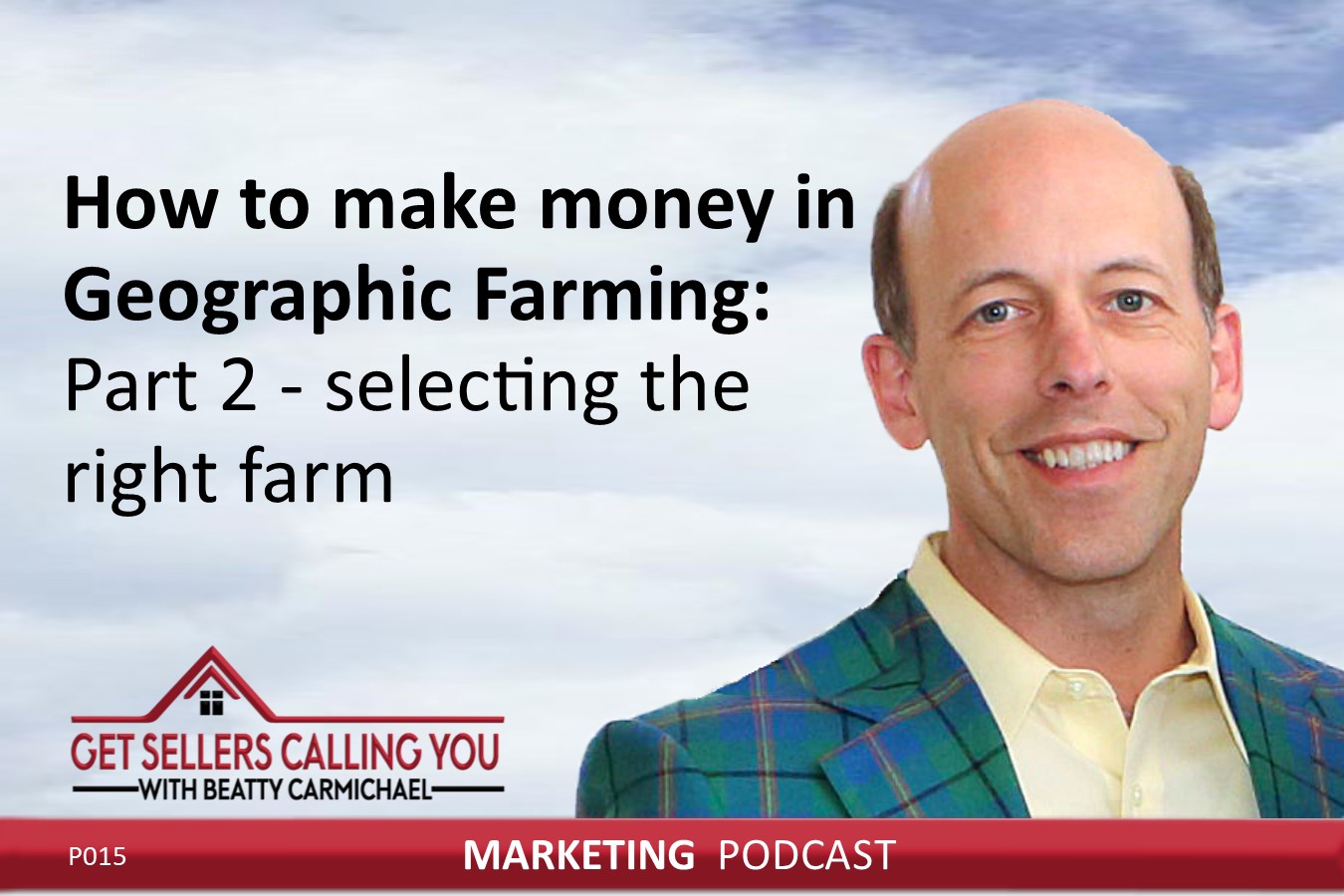
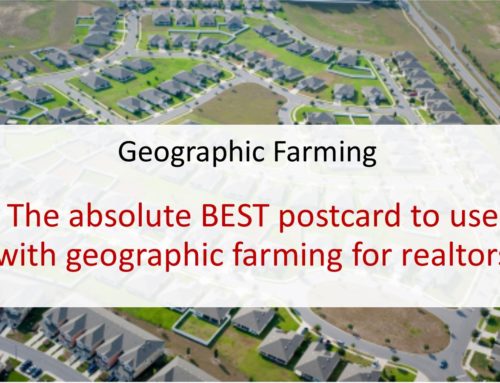
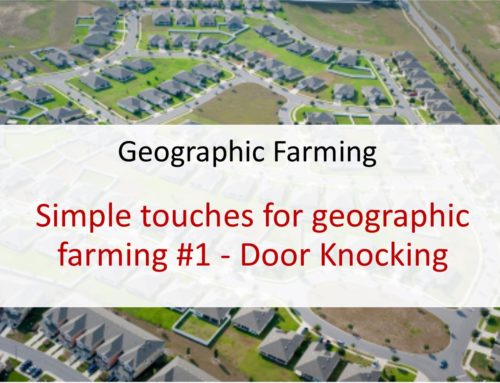
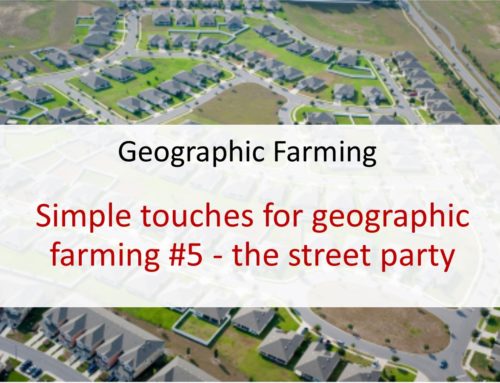
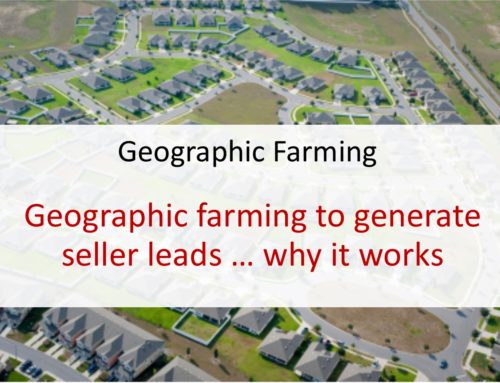


Leave A Comment